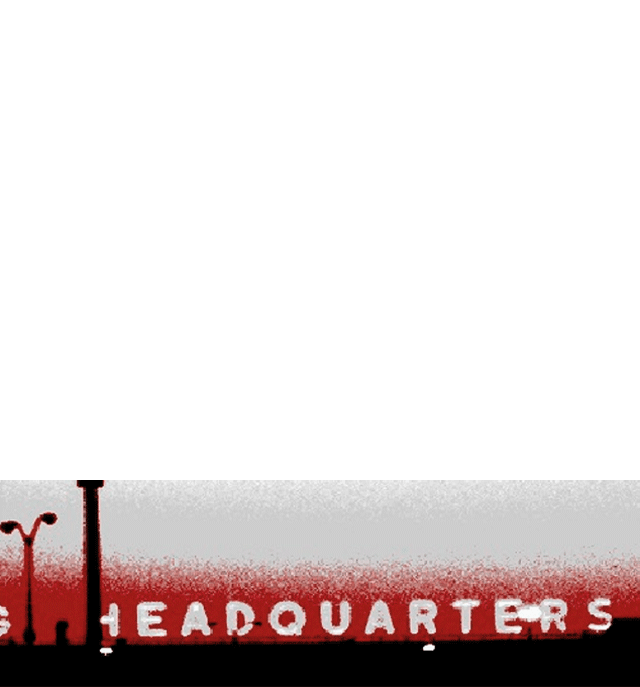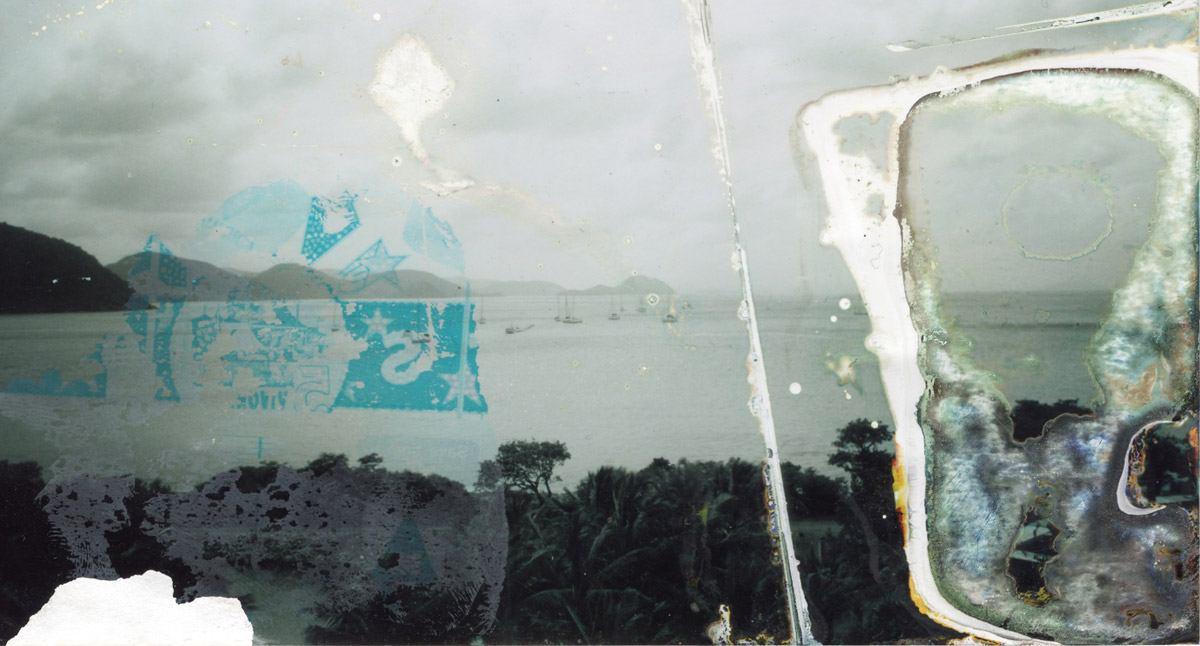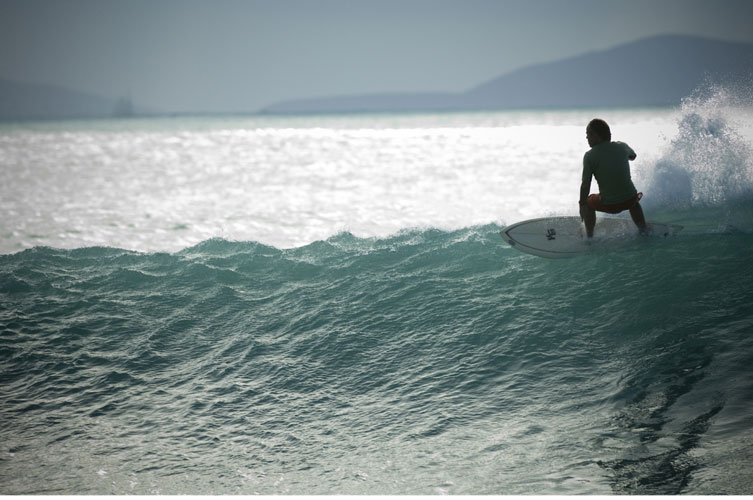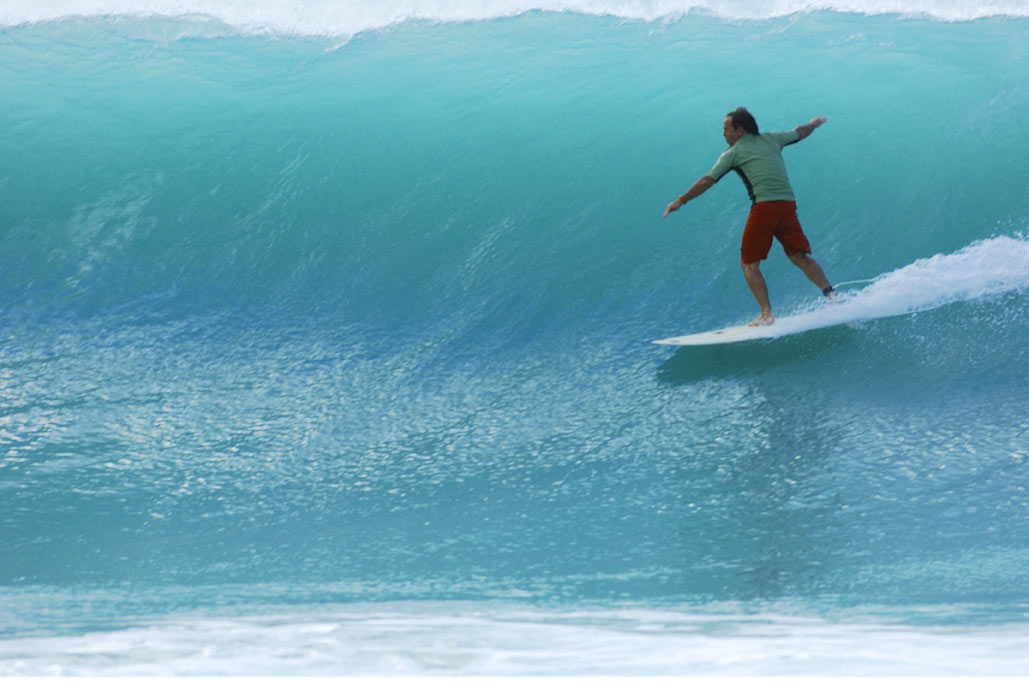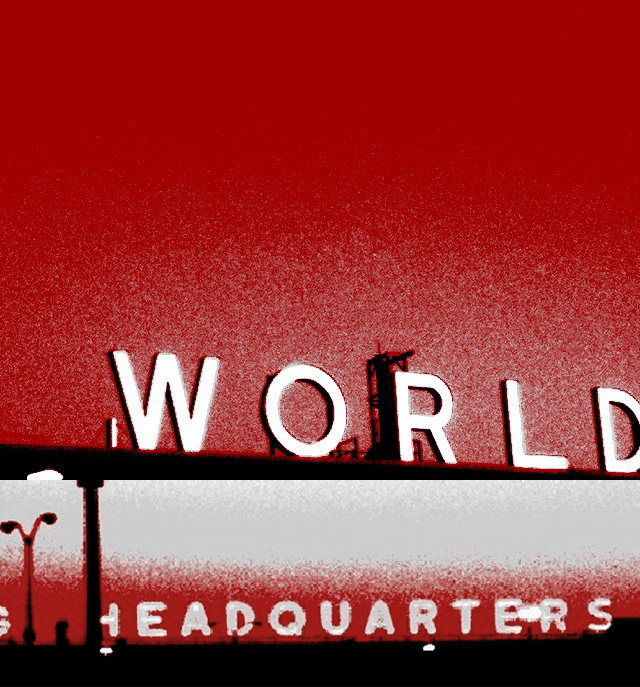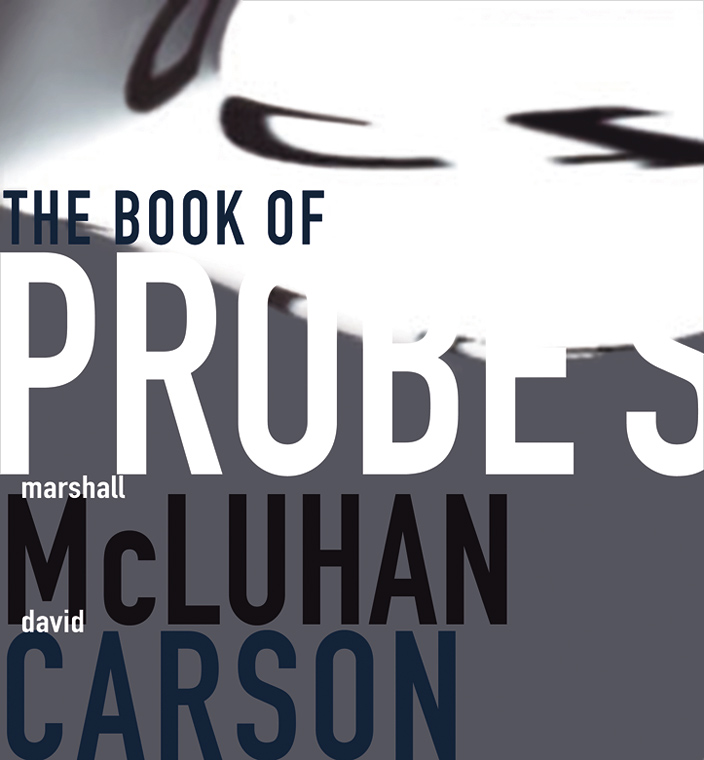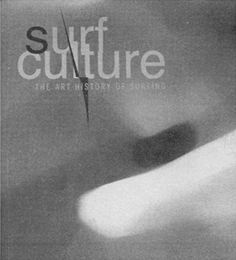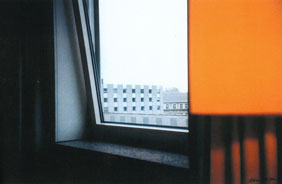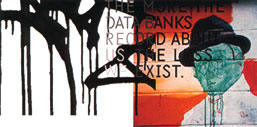trek review
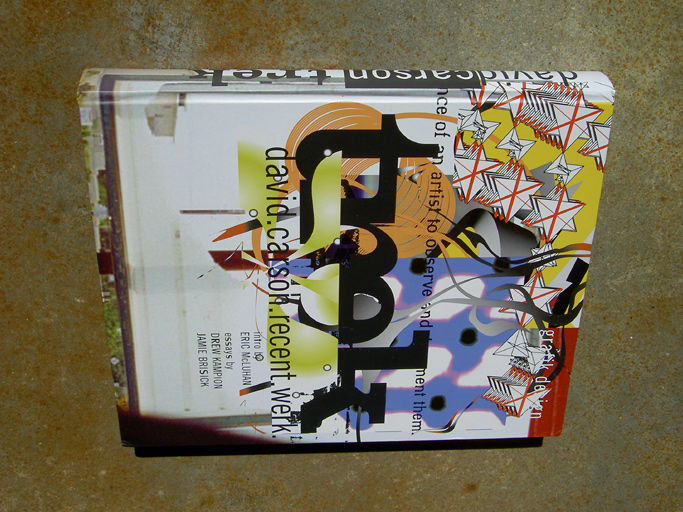
july.03 05
Hi David,
I just wanted to thank you for your work and inspiring me. Your the reason I wanted to do graphic design (you must hear that a lot). I first saw your work for Ray Gun at the Borders in my hometown in Illinois. I didn’t even know what what you did was called, but I knew at that moment that’s what I wanted to do. That was about eight, nine years ago… I went to art school and worked at a few design agencies, and now at an in-house design department for a fairly large company near Portland, OR. I came to a transitioning point these past two days, and decided I should go back and take a look at what inspired me in the first place. I went to the Borders here and checked out your book, Trek. It re-inspired me… and when I saw the page with the spread (with a cropped photo of a red flower) and the next page with the little stars scattered across the page, it went straight to my heart, and I knew what I wanted to do. Your work inspired me nine years ago, and did it’s work again just today. I plan on finding more creative work now. Thanks for that. What you said, “Trust your gut. Do what you love…” really stuck with me as well. I believe it. I put it on one my stickies on my laptop. Anyway, just wanted to say Thanks for all YOU do… and inspiring and motivating all those who appreciate your work… and to let you know you are making a positive difference in people’s lives.
Tommy
april.30 05
hello david,
my name is daniel orme and i live in south africa. I am in my second year of graphic design and am at a constant srugle with all the closed minded lectures who live inside there boxes. I came across a copy of “end of print”first edition, in our campus libary in the first week of my first year, it was hiding at the back, just that one copy. At first it was the cover that appeald to me, the spine barly cracked I started paging through the first few pages. It was like every page was gold and i tryed to handle the leaves as little as i could so i didnt damage them… I couldnt discribe the feeling i was feeling, I sorta colapsed down to the floor and cradled the book in my folded legs and continued to page. My girlfriend,Mel, work for a sub culture surf/skate/music magazine called Blunt and the publisher sadly hates your work along with the conservative designer, but the editor had a copy of the End of print(updated) so I am borrowing it, iv had it for about a month now and i cant stop looking through it, I literely read it every single day. I am saving up to buy “Trek” and my own copy of “end of print” But its hard to save when you spending money on printing every week. We have the “Design indaba” In Cape Town and i saved up just enough money to go last year but the week befor i was forced to spend it all on printing. And our economy doesnt help either. Please forgive me but I even contenplated tryna steel “end of print” from our libary. Dont worry I will buy it… eventually.
Iv got my British citizinship so as soon as im done studying im goin over to live and work for a while…maby I could meet your friend Ed. I was also thinking about the U.S, then i could meet you…That would be the highlight of my life, If i die after meeting you then I die a happy man…ha!
Oh well,I really hope you get this and I hope even more that you arnt to busy to say hi. Thank you soooooooooooooo much doing what you do,
you are more than an insperation for me.
Till we meet,
daniel
mar.23 05
Sent: Mar 23, 2005 10:49 AM
To: dcarson@earthlink.net
Subject: way2go
way2go! as the first time I saw david carson’s design, it seemed the world has turned upside-down. postmodernism has colored the world of grafik design. david carson is iconed as an icon of postmodernism design (according to No More Rules in Postmodernism Graphic Design). and recently I have been studying of what postmodernism is. mr carson, i still don’t understand its concept–beats me. i wonder if you would drop by to indonesia
feb.25 05
Sent: Feb 25, 2005 3:51 PM
To: dcarson@earthlink.net
Subject: thanks for the inspiration
I just picked up your book TREK at my local book store.
I almost cried.
I have decided that i am going to rock the art world.
See you in a few years.
-Rob Mach
dec.14 04
Dear David Carson
I have just graduated from college as a typographer, and wanted to let you know that in the whole boringly derivative world of contemporary graphic design, yours is the only work that is genuinely original, refreshing, and makes visual and intellectual sense. I love it. Thank you for providing so much inspiration.
All the best
Shaun
london
Dec, 14.04
nov.30 04
Hi, i hope this email gets to Mr. Carson somehow. I am a student at The Art Institute of Portland OR, well im going to be graduating the 17th of December. i just wanted to tell you how much i enjoy your books, the only thing that really keeps me moving along is seeing how much different and creative someone is besides what the system wants designers to be. My graduating class is having a portfolio show and everyones book looks pretty much the same, all but mine. in a way i am kinda scared because my stuff is so much different, but in a way i know its better that my work doesnt look like everyone else’s. Thank you, through your books for having a direct influence on what i do and how i look at design, unlikely i would even be this far if it wasnt for them. i am enjoying your new book, keep up the good work.
-Carlos
Jul.23 04
“No one can get me to sit down and thumb through a 450+ page scrapbook except the grandmaster of Graphic Design himself, David Carson. Page after page DC’s Trek creates a sense of newborn wonder”
Jason Brooks – BPM magazine issue 55
june.14 04
david
Just saw you’re new book ( TREK )! Man, soooooooo nice… again!
You’re the best! Live long!
Good Day…
;) mike
june.14 04
Hey David, it’s Kent . I met you when you were speaking at the Art Institute of Pittsburgh, in 2002. I’m absolutely estatic about the release of Trek! Your beautiful work in a deconstructive manner shows that the world, and all in it isn’t perfect. Yet somehow when I view your art it seems to make a bit more sense. So glad to see the overwhelming amount of new stuff to look at and perhaps print has not yet reached its
june.10 04
hello mr. carson. you may be wondering a bit about my email address (the whole @us.army.mil thing). well, i am in the army, and am an aspiring graphic designer. you might think the two contradict each other, and perhaps they do, but it is all a part of my trek (seriously, no pun intended!). my eyes were opened to this amazing field of vision and imagination when i attended the california state summer school for the arts, csssa, at cal arts in valencia, ca. i had origionally signed up to major in painting during the month-long session, but realized that it probably was not the best of choices for me. at teh time i was unsure of what i wanted to do with my creativity even though i knew then that i wanted to be an artist. i attempted to get into an animation class but could not based on registration and portpholio requirements, so teh next best choice for me was digital media arts. i will admit i was a tad reluctant at first, but oh, how i fell in love the first day. that one month i spent glued to the computer as if it were my life line.
it was truely a liberasting experience. it was only after i left csssa that i realized i was interested in graphic design all along when i returned to my room at home a saw all the magazine spreads tacked to my walls, teh stacks of cd jewel cases, and teh misc postcards, promos, etc. after csssa, however, i had a lack of inpiration, until i found one of your books. my first book on graphic design htat i bought was 2nd sight. i saw both theendofprint and 2ndsight, but for whatever reason i chose the later. reading about how your art was fed by your intuition really sent me into a designing frenzy since then. i currently own (and have read) theendofprint, 2ndsight, fotografiks, and trek.
it is very dificult trying ot express myself as an artist while serving in the military, but i am managing. my sketchbooks are becoming large bodies of works in themselves. i can’t seem to stop drawing, printing and thinking about design. i suppose that what i am trying ot say amongst all of this blah, blah, blah and stuff is thank you. thank you for inderectly providing me with teh artistic direction, guidance, and inspiration that i have been craving. i most anxiously look forward to getting out of the military after my tour and attneding school for design before, after, of while my wife attends for fine art. it is in my blood, my heart and my soul. it is one of my many ways of life. it is how i choose to view the world. again, much thanks for making me think. if you have the chance please write back, if not, that’s cool too. take care.
andrew
june.5 04
Mr Carson,
I was recently given trek as a gift for being a great mother and an incidental grafiste. Thank you!
I LOVE it!
I saw you a few years back in Sydney, Australia, and you inspired me then; with trek I can dream, learn and enjoy the seemingly limitless possibilities of design in the comfort of my own home…
This email sounds really pretty corny, but I really wanted to let you know how much of an inspiration your work is.
Okay, over and out for now,
Be good and enjoy the surf.
caro (Australia)
feb.24 04
hi david i toke the book today(!) from my country (gr)
i was ready to buy it from amazon… but the book came here at the right time!
anyway… this book… how can i say… bring me back to a new inspiration..
to change the thinks in my work.. in my life… to change the way to do the most thinks…
to put some ideas in right way… the right claim for this book is ‘free your mind’ !
thanks for all,
Kostis
feb.12 04
jack babiloni
David Carson made history in magazines and many people can’t stand envy, especially bad (conventional) designers.
DC was and IS the king of typographers and I thank him because he made bad writers to look masters and when I see his work I feel alive, tense and emotionally touched.
Nothing in world graphic design (except my work and Jennifer Sterling’s) seems to be as alive as his.
Thank you for reinvent the beauty, Mr Carson!
feb.5 04
Mr. Carson,
Judging from the number of letters and e-mails I saw printed in your latest book, I assume you get quite a few letters like this. Regardless, I still wanted to write you to tell you what an inspiration your work has been. When it was first hinted at that you would be doing the graphic design for Nine Inch Nails’ album The Fragile, I looked you up online and ended up purchasing your book as soon as humanly possible. I loved what I saw then, and I continue to love your work. It’s easy to forget that our world is simply made up of intricate shapes and colors, and your work emphasizes the simplicity AND the intricacy of this concept. It makes you think, and thrills the senses all at once. Thank you for the work you do, and here’s to many more years of Fotographics!
–
Chris Brightly
feb.5 04
David, or whoever will read this. You are the inspiration ITEM for my work. I am a graphic designer, and your work was the subject of my Masters degree. 3 years are past since I finished my studies, and I still remember almost every word of your books, article, etc. Thank you for changing my visual point of view.
Yiannis Hadjipanayis
GraFik Designer – VISual Communicator
the first Email/review of trek.
“Grande Carson! this is the book we were waiting for!
it deserves a special place in our studio’s library
thanx
alex
art force thesign
italia”
hi david_
just dropped by @ artazart_paris for a copy of trek.
love it
dreamed through some of the speads last night (!!!)
which means that it goes way down deep. bravo.
TREK is great, its the best ive ever seen as a design-book. and, it is art, art because you made it to a personal book. i feel more respect then ever for you, because you brought your live to a closer look. beginning with lots of pics about the surf and about your son and daughter,they are really sweet, because of the arriving of the kitchen to tortola… the small things that matters. sorry, my english is to bad to put it in right words what your life-work means to me…
and i also see in the book some sadness, some hard times you must have been going through…and it reflects some pages, for me…but its art so its just my interpretation…
i truly love the book, respect you more then ever… and hope to meet you one day for at least a cup of coffee.
sven
